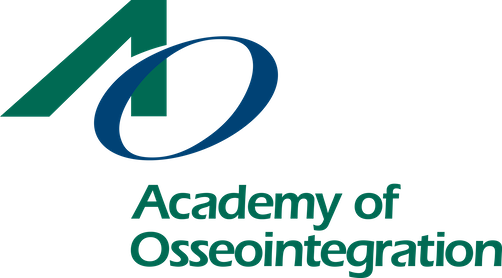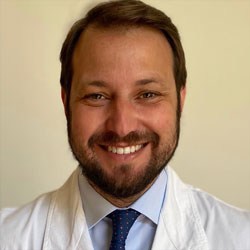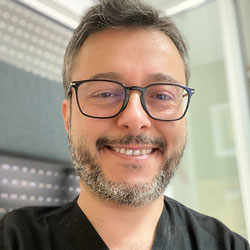Robert Levine, DDS
This clinical, usable information- packed presentation will describe and identify 10 essential keys for performing immediate single tooth replacement of a hopeless maxillary central incisor. This treatment is considered a complex procedure and a team approach is suggested as the maxillary central incisor is seen as having the most esthetic zone failures resulting in unhappy patients. Once this occurs, restoring the lost hard and soft tissues to their original pre-surgical levels is near impossible. The updated 10 Keys checklist, if strictly followed, will provide high predictability in preventing esthetic complications and offers guidelines to ensure high success based on published studies by Dr. Levine and his clinical research group which confirm the use of the 10 Keys protocol.
Recorded February 4, 2023
-
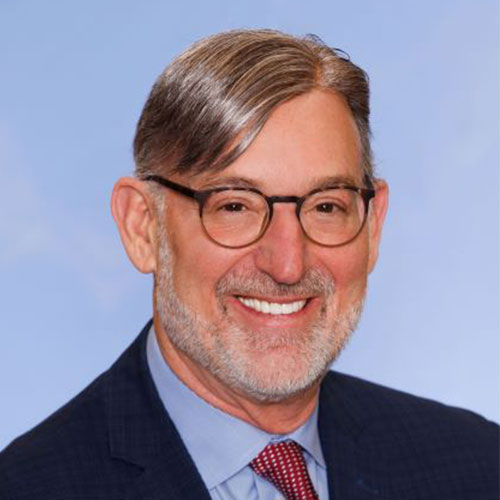
-
 Recorded on May 20th, 2025 Description: This presentation explores the expanding role of 3D printing technology in implant prosthetic dentistry, highlighting its impact on clinical workflows and treatment outcomes. Attendees will gain insight into how additive manufacturing is applied to the fabrication of surgical guides and various temporary/definitive prostheses, from crowns to complete-arch frameworks. The talk will include current trends, clinical applications, and patient treatment examples demonstrating the benefits of 3D printing in enhancing precision, efficiency, and patient-specific care. Participants will also learn to differentiate between various types of 3D printers and their suitability for specific prosthodontic applications. In addition, the presentation will guide the selection of appropriate resins used in printing implant-supported restorations. Upon completion of this presentation, participants should be able to: 1) Discuss the extent of use of 3D printers in implant prosthetic dentistry. 2) Identify the types of printers suitable for implant prosthodontics. 3) Select the appropriate type of resins that can be used for 3D printed implant restorations. Burak Yilmaz, DDS, PhD Dr. Burak Yilmaz received his dental and PhD degrees from the Ankara University and his subsequent academic titles at The Ohio State University, College of Dentistry. He was promoted to the rank of Associate Professor with tenure in 2014, and to the rank of Full Professor in 2019. He was involved in teaching dental and postdoctoral students and performing research, while practicing in the Dental Faculty Practice during his time at The Ohio State University. In September 2020, he became the Director of the Digital Dental Technologies Research Laboratory at the University of Bern School of Dental Medicine. He is also an Adjunct Professor at The Ohio State University. He holds a special interest in implant prosthodontics and digital dentistry and published more than 340 research studies and clinical reports. He is the co-author of the Implants Chapter in 5th and 6th editions of “Contemporary Fixed Prosthodontics” textbook by Rosenstiel et al. He serves as the Associate Editor of the Journal of Prosthodontics, is a member of the Editorial Board of the Journal of Prosthetic Dentistry and the Journal of Dentistry, Digital Dentistry Section, and serves on the AO/OF Research Committee for the Academy of Osseointegration. Dr. Yilmaz has indicated the following relevant financial relationships to disclose: Spoken at Meetings: Neoss Implants, Straumann, Kaladent, Received honoraria: Neoss Implants, Saremco, Dentbird, Kaladent Employed by/provided consulting for: Dentbird Performed research sponsored by: DWS/Dfab, Neoss Implants Relevant literature for further information: Çakmak G, Cuellar AR, Donmez MB, Schimmel M, Abou-Ayash S, Lu W-E, Yilmaz B. Effect of Printing Layer Thickness on the Trueness and Margin Quality of 3D-Printed Interim Dental Crowns. Applied Sciences. 2021; 11(19):9246. https://doi.org/10.3390/app11199246 Sabatini GP, Yoon HI, Orgev A, Fonseca M, Molinero-Mourelle P, Yilmaz B, Cakmak G. Complete Digital Workflow for Fabricating an Occlusal Device Using Artificial Intelligence- Powered Design Software and Additive Manufacturing: A Dental Method. Int J Prosthodont. 2024 Feb 21;37(7):275-284. doi: 10.11607/ijp.8941. PMID: 38787592.
Recorded on May 20th, 2025 Description: This presentation explores the expanding role of 3D printing technology in implant prosthetic dentistry, highlighting its impact on clinical workflows and treatment outcomes. Attendees will gain insight into how additive manufacturing is applied to the fabrication of surgical guides and various temporary/definitive prostheses, from crowns to complete-arch frameworks. The talk will include current trends, clinical applications, and patient treatment examples demonstrating the benefits of 3D printing in enhancing precision, efficiency, and patient-specific care. Participants will also learn to differentiate between various types of 3D printers and their suitability for specific prosthodontic applications. In addition, the presentation will guide the selection of appropriate resins used in printing implant-supported restorations. Upon completion of this presentation, participants should be able to: 1) Discuss the extent of use of 3D printers in implant prosthetic dentistry. 2) Identify the types of printers suitable for implant prosthodontics. 3) Select the appropriate type of resins that can be used for 3D printed implant restorations. Burak Yilmaz, DDS, PhD Dr. Burak Yilmaz received his dental and PhD degrees from the Ankara University and his subsequent academic titles at The Ohio State University, College of Dentistry. He was promoted to the rank of Associate Professor with tenure in 2014, and to the rank of Full Professor in 2019. He was involved in teaching dental and postdoctoral students and performing research, while practicing in the Dental Faculty Practice during his time at The Ohio State University. In September 2020, he became the Director of the Digital Dental Technologies Research Laboratory at the University of Bern School of Dental Medicine. He is also an Adjunct Professor at The Ohio State University. He holds a special interest in implant prosthodontics and digital dentistry and published more than 340 research studies and clinical reports. He is the co-author of the Implants Chapter in 5th and 6th editions of “Contemporary Fixed Prosthodontics” textbook by Rosenstiel et al. He serves as the Associate Editor of the Journal of Prosthodontics, is a member of the Editorial Board of the Journal of Prosthetic Dentistry and the Journal of Dentistry, Digital Dentistry Section, and serves on the AO/OF Research Committee for the Academy of Osseointegration. Dr. Yilmaz has indicated the following relevant financial relationships to disclose: Spoken at Meetings: Neoss Implants, Straumann, Kaladent, Received honoraria: Neoss Implants, Saremco, Dentbird, Kaladent Employed by/provided consulting for: Dentbird Performed research sponsored by: DWS/Dfab, Neoss Implants Relevant literature for further information: Çakmak G, Cuellar AR, Donmez MB, Schimmel M, Abou-Ayash S, Lu W-E, Yilmaz B. Effect of Printing Layer Thickness on the Trueness and Margin Quality of 3D-Printed Interim Dental Crowns. Applied Sciences. 2021; 11(19):9246. https://doi.org/10.3390/app11199246 Sabatini GP, Yoon HI, Orgev A, Fonseca M, Molinero-Mourelle P, Yilmaz B, Cakmak G. Complete Digital Workflow for Fabricating an Occlusal Device Using Artificial Intelligence- Powered Design Software and Additive Manufacturing: A Dental Method. Int J Prosthodont. 2024 Feb 21;37(7):275-284. doi: 10.11607/ijp.8941. PMID: 38787592. -
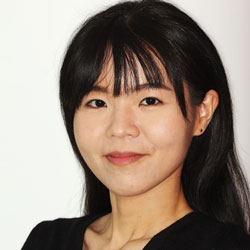 Chia-Yu (Jennifer) Chen, DMD, DMSc With the advent of digital dentistry, clinicians find themselves inundated with new materials, hardware and software in daily practice. A thorough comprehension of the technologies will help us integrate digital solutions to promote communication, as well as accelerating treatment processes and optimizing treatment outcomes. This presentation will allow dentists to become familiar with the digital workflow, with an emphasis on the implementation of additive manufacturing, namely 3D printing technology in practice. The various 3D printing technologies (FDM, SLA and DLP) and their pros and cons will be discussed. Clinical scenario will be presented to demonstrate their respective indications. Recorded - June 9, 2021
Chia-Yu (Jennifer) Chen, DMD, DMSc With the advent of digital dentistry, clinicians find themselves inundated with new materials, hardware and software in daily practice. A thorough comprehension of the technologies will help us integrate digital solutions to promote communication, as well as accelerating treatment processes and optimizing treatment outcomes. This presentation will allow dentists to become familiar with the digital workflow, with an emphasis on the implementation of additive manufacturing, namely 3D printing technology in practice. The various 3D printing technologies (FDM, SLA and DLP) and their pros and cons will be discussed. Clinical scenario will be presented to demonstrate their respective indications. Recorded - June 9, 2021 -
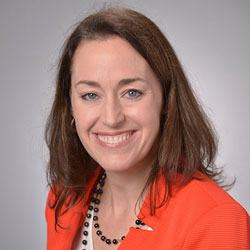 Lourdes Ann Christopher, DDS, MS Soft tissue grafting is a viable treatment option for root coverage and enhancement of gingival biotype as well as the prevention of future gingival recession around teeth. Soft tissue grafting techniques around teeth have evolved over the years resulting in better and more predictable clinical outcomes. Research has found that like teeth, dental implants have better long-term prognosis when they have improved soft tissue quality and thickness. This presentation will give a background on the rationale for soft tissue grafting around teeth and dental implants. Various advanced surgical techniques will be presented with an emphasis on timing to improve outcomes both in terms of patient morbidity and long-term stability. There will be discussion of the use of L-PRF, homeopathic supplements, lasers and biologics to enhance wound healing as well as post grafting frenectomy and vestibular extensions to stabilize the gingival margin post hard and soft tissue grafting. Recorded - February 16, 2021
Lourdes Ann Christopher, DDS, MS Soft tissue grafting is a viable treatment option for root coverage and enhancement of gingival biotype as well as the prevention of future gingival recession around teeth. Soft tissue grafting techniques around teeth have evolved over the years resulting in better and more predictable clinical outcomes. Research has found that like teeth, dental implants have better long-term prognosis when they have improved soft tissue quality and thickness. This presentation will give a background on the rationale for soft tissue grafting around teeth and dental implants. Various advanced surgical techniques will be presented with an emphasis on timing to improve outcomes both in terms of patient morbidity and long-term stability. There will be discussion of the use of L-PRF, homeopathic supplements, lasers and biologics to enhance wound healing as well as post grafting frenectomy and vestibular extensions to stabilize the gingival margin post hard and soft tissue grafting. Recorded - February 16, 2021 -
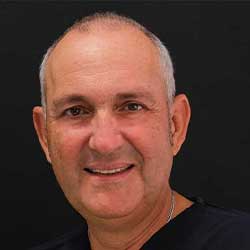 Hakan Özyuvacı, DDS, PhD Nowadays, implant applications to compensate for missing teeth have become very common. As in many cases, we can easily apply implants. Unfortunately, during implant applications, we often encounter hard and soft tissue deficiencies and we apply many different methods to compensate for these deficiencies. Although there are cases where we have performed with advanced surgical techniques and achieved good results, we have pursued alternative treatment methods due to the risk of complications and the prolonged treatment period. In this presentation, current treatment methods preferred to shorten treatment processes and reduce complication risks and the advantages and disadvantages of advanced surgical techniques we have previously applied will be discussed. Upon completion of this presentation, participants should be able to: 1) Discuss comprehensive implant treatment. 2) Describe how to reduce the risk of complications and treatment processes of advanced surgical techniques. 3) Explain the predictable advantages of alternative treatment methods with fewer angled implants or shortened implant placement. Recorded September 24th
Hakan Özyuvacı, DDS, PhD Nowadays, implant applications to compensate for missing teeth have become very common. As in many cases, we can easily apply implants. Unfortunately, during implant applications, we often encounter hard and soft tissue deficiencies and we apply many different methods to compensate for these deficiencies. Although there are cases where we have performed with advanced surgical techniques and achieved good results, we have pursued alternative treatment methods due to the risk of complications and the prolonged treatment period. In this presentation, current treatment methods preferred to shorten treatment processes and reduce complication risks and the advantages and disadvantages of advanced surgical techniques we have previously applied will be discussed. Upon completion of this presentation, participants should be able to: 1) Discuss comprehensive implant treatment. 2) Describe how to reduce the risk of complications and treatment processes of advanced surgical techniques. 3) Explain the predictable advantages of alternative treatment methods with fewer angled implants or shortened implant placement. Recorded September 24th -
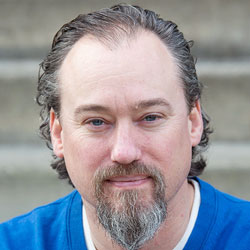 Cory Roletto, MBA This course will cover the most recent changes in online marketing and provide the components needed to create a comprehensive marketing strategy for both existing practices or start-ups. You will learn the key items to implement, how they work, and how to measure success. In this session we will discuss changes in Google’s algorithm, website optimization, social media, accessibility, and ways you can optimize your website to generate new patients. Recorded - March 23, 2022
Cory Roletto, MBA This course will cover the most recent changes in online marketing and provide the components needed to create a comprehensive marketing strategy for both existing practices or start-ups. You will learn the key items to implement, how they work, and how to measure success. In this session we will discuss changes in Google’s algorithm, website optimization, social media, accessibility, and ways you can optimize your website to generate new patients. Recorded - March 23, 2022 -
 Ueli Grunder, DMD Although we all prefer to talk about beautiful successes, it is usually more interesting to talk about complications. Even before a planned implantation in the esthetic zone, there may be problems that require a special intervention. During implant therapy, usually in combination with bone and soft tissue augmentation, undesirable complications can occur, especially in the way of poor healing, and finally, unsatisfactory results are seen after the end of the treatment, which may require re-treatment. In most cases, the complications manifest themselves quantitatively or qualitatively in the soft tissue. In this lecture we will discuss how to deal with certain complications. Unfortunately, only a few examples can be discussed within the scope of this lecture. Recorded - June 21, 2022
Ueli Grunder, DMD Although we all prefer to talk about beautiful successes, it is usually more interesting to talk about complications. Even before a planned implantation in the esthetic zone, there may be problems that require a special intervention. During implant therapy, usually in combination with bone and soft tissue augmentation, undesirable complications can occur, especially in the way of poor healing, and finally, unsatisfactory results are seen after the end of the treatment, which may require re-treatment. In most cases, the complications manifest themselves quantitatively or qualitatively in the soft tissue. In this lecture we will discuss how to deal with certain complications. Unfortunately, only a few examples can be discussed within the scope of this lecture. Recorded - June 21, 2022 -
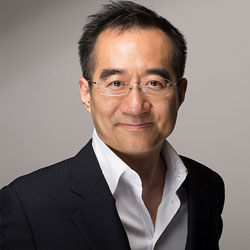 Joseph Kan, DDS, MS Esthetics immediate tooth replacement, a controversial, yet intriguing treatment concept conceived more than 25 ago. While the concept has evolved over time, numerous debates had been dedicated to its validity. Now, 25 years later, questions remain: Does it maintain gingival esthetics? Does it work as well as implant in healed sites? Is it a viable option after all ? This presentation will focus on pros and cons of esthetics immediate tooth replacement. More importantly, did we validate this procedure from lessons learned by mistakes made over the past 25 years. Recorded - November 12, 2022
Joseph Kan, DDS, MS Esthetics immediate tooth replacement, a controversial, yet intriguing treatment concept conceived more than 25 ago. While the concept has evolved over time, numerous debates had been dedicated to its validity. Now, 25 years later, questions remain: Does it maintain gingival esthetics? Does it work as well as implant in healed sites? Is it a viable option after all ? This presentation will focus on pros and cons of esthetics immediate tooth replacement. More importantly, did we validate this procedure from lessons learned by mistakes made over the past 25 years. Recorded - November 12, 2022 -
 Lambert Stumpel, DDS The restorative materials that are used for all on four implant fixed prosthesis vary between PMMA, composite, translucent and high strength Zirconia. Most need internal reinforcement to function successfully in the oral environment. Historically support consisted of a cast gold bar, in recent years CAD/CAM milled titanium has been popularized. Today yet another support system has been developed. It allows the fabrication of a metal bar in about 20-30 minutes, at a fraction of the cost of current CAD/CAM bars. This presentation will show how a prefabricated modular system, when combined with modern printing and milling techniques, allows the fabrication of a final prosthesis near time of implant placement. Recorded – February 25, 2023
Lambert Stumpel, DDS The restorative materials that are used for all on four implant fixed prosthesis vary between PMMA, composite, translucent and high strength Zirconia. Most need internal reinforcement to function successfully in the oral environment. Historically support consisted of a cast gold bar, in recent years CAD/CAM milled titanium has been popularized. Today yet another support system has been developed. It allows the fabrication of a metal bar in about 20-30 minutes, at a fraction of the cost of current CAD/CAM bars. This presentation will show how a prefabricated modular system, when combined with modern printing and milling techniques, allows the fabrication of a final prosthesis near time of implant placement. Recorded – February 25, 2023 -
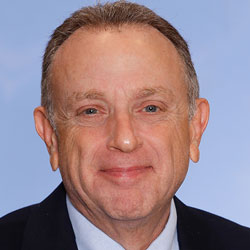 Robert Vogel, DDS This fast-moving clinical based presentation will provide a step by step approach to diagnosis and treatment of the fully and partially edentulous patient with removable prosthesis including overdentures and implant retained removable partial dentures. Scientifically based tips, tricks and techniques will be presented to assure long-term success with precision, productivity and ideal patient care. Issues discussed will include ideal number and position of implants, attachment selection, prosthesis design and introduction of all new prosthetics components. Recorded - December 3, 2022
Robert Vogel, DDS This fast-moving clinical based presentation will provide a step by step approach to diagnosis and treatment of the fully and partially edentulous patient with removable prosthesis including overdentures and implant retained removable partial dentures. Scientifically based tips, tricks and techniques will be presented to assure long-term success with precision, productivity and ideal patient care. Issues discussed will include ideal number and position of implants, attachment selection, prosthesis design and introduction of all new prosthetics components. Recorded - December 3, 2022 -
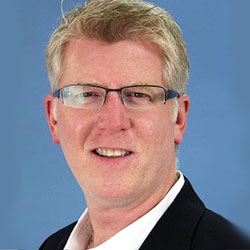 Lee Culp, CDT As dentistry evolves into the digital world, the successful incorporation of computerization and new technology will continue to provide more efficient methods of communication and fabrication while at the same time retaining the individual creativity and artistry of the skilled dentist and dental technician, while the utilization of new technology will continue to enhance the close cooperation and working relationship of the dentist/technician team. This presentation will offer participants a unique insight into digital design by creating a Virtual Patient by combining 3D Face Scanning, IOS and CT scans. Then using a combination of Diagnostic, Restorative, Orthodontic, Denture and Implant planning software for pre surgical planning to design, printed diagnostic wax-up and milled provisional PMMA restorations, and their digital replicas to guide us in the creation of cad-cam restorations, for both tooth and implant supported prosthetics. Recorded - February 5, 2022
Lee Culp, CDT As dentistry evolves into the digital world, the successful incorporation of computerization and new technology will continue to provide more efficient methods of communication and fabrication while at the same time retaining the individual creativity and artistry of the skilled dentist and dental technician, while the utilization of new technology will continue to enhance the close cooperation and working relationship of the dentist/technician team. This presentation will offer participants a unique insight into digital design by creating a Virtual Patient by combining 3D Face Scanning, IOS and CT scans. Then using a combination of Diagnostic, Restorative, Orthodontic, Denture and Implant planning software for pre surgical planning to design, printed diagnostic wax-up and milled provisional PMMA restorations, and their digital replicas to guide us in the creation of cad-cam restorations, for both tooth and implant supported prosthetics. Recorded - February 5, 2022 -
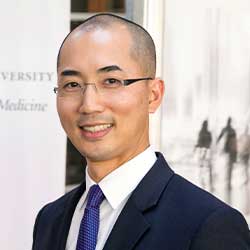 Yong-Han Koo, DDS In this program, you will learn about new innovations in digital robotic workflow for optimal clinical care ranging from a single-tooth, immediate implant therapy to complex situations addressing both severe hard and soft tissue defects using bioactive modifiers and customized GBR techniques in the esthetic zone as well as the posterior maxilla and mandible. Specifically, efficient robotic-assisted surgical protocol based on prosthetically and biologically driven concept will be reviewed in a step-by-step manner. Future concepts will also be discussed. Upon completion of this presentation, participants should be able to: 1) Explain the difference between ‘Success’ vs ‘Survival’ in implant therapy. 2) Discuss when to apply Stage I, II and III surgical protocols based on risk factors and predictability. 3) Recognize the advantages of robotic-assisted surgery and appreciate the benefits of minimally invasive surgery.Recorded December 11th, 2024
Yong-Han Koo, DDS In this program, you will learn about new innovations in digital robotic workflow for optimal clinical care ranging from a single-tooth, immediate implant therapy to complex situations addressing both severe hard and soft tissue defects using bioactive modifiers and customized GBR techniques in the esthetic zone as well as the posterior maxilla and mandible. Specifically, efficient robotic-assisted surgical protocol based on prosthetically and biologically driven concept will be reviewed in a step-by-step manner. Future concepts will also be discussed. Upon completion of this presentation, participants should be able to: 1) Explain the difference between ‘Success’ vs ‘Survival’ in implant therapy. 2) Discuss when to apply Stage I, II and III surgical protocols based on risk factors and predictability. 3) Recognize the advantages of robotic-assisted surgery and appreciate the benefits of minimally invasive surgery.Recorded December 11th, 2024 -
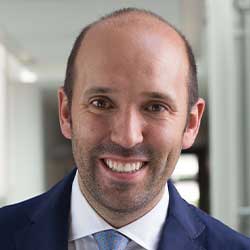 Gianluca Paniz DDS, MS, PhD This presentation will focus on the key restorative aspects that are related to the long-term success of implant restorations and peri-implant tissue stability. Upon completion of this presentation, participants should be able to: 1) Describe the ideal implant positioning in relation to the tooth position and the bone. 2) Explain how to design the implant restoration emergence profile. 3) Select the best restorative material. Recorded on January 15th
Gianluca Paniz DDS, MS, PhD This presentation will focus on the key restorative aspects that are related to the long-term success of implant restorations and peri-implant tissue stability. Upon completion of this presentation, participants should be able to: 1) Describe the ideal implant positioning in relation to the tooth position and the bone. 2) Explain how to design the implant restoration emergence profile. 3) Select the best restorative material. Recorded on January 15th -
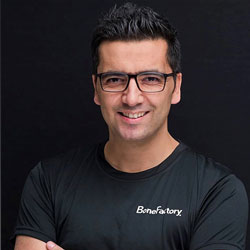 Şerif Küçük, MSc This presentation will review current concepts in implantology-augmentative techniques including:
Şerif Küçük, MSc This presentation will review current concepts in implantology-augmentative techniques including:-
- The Biological Concepts of Bone Augmentation and the Split Bone Block Technique by Professor Fouad Khoury;
-
- utilizing bone chips in the retromolar for safe bone harvesting
-
- discussion of the external oblique line-up and advanced bone augmentation in complex cases.
-
-
 Preetinder Singh, DDS, MS Bone regeneration is often needed prior to dental implant treatment due to the lack of adequate quantity and quality after infectious diseases. The greatest regenerative power can be obtained with autologous tissue, primarily the bone alive, taken from the same site or adjacent sites, up to the use centrifugation of blood with the selection of the parts with the greatest potential regenerative. In fact, various techniques and technologies were chronologically successive to cope with an ever better preparation of these concentrates of blood. Our aim is to know these advances and discuss the ways in which platelet concentrates may provide such unexpected beneficial therapeutic effects. Most of the growth factors derived from autologous blood is released upon platelet activation, and their clinical use has been popularized with Platelet-rich plasma (PRP), Platelet rich fibrin (PRF) & its advancements namely A-PRF & i-PRF, Concentrated Growth Factors (CGF), Sticky Bone Concept etc. It is time to use this ‘blood’ in different ways to achieve regenerative potentials in the field of implant dentistry. Recorded - January 20, 2021
Preetinder Singh, DDS, MS Bone regeneration is often needed prior to dental implant treatment due to the lack of adequate quantity and quality after infectious diseases. The greatest regenerative power can be obtained with autologous tissue, primarily the bone alive, taken from the same site or adjacent sites, up to the use centrifugation of blood with the selection of the parts with the greatest potential regenerative. In fact, various techniques and technologies were chronologically successive to cope with an ever better preparation of these concentrates of blood. Our aim is to know these advances and discuss the ways in which platelet concentrates may provide such unexpected beneficial therapeutic effects. Most of the growth factors derived from autologous blood is released upon platelet activation, and their clinical use has been popularized with Platelet-rich plasma (PRP), Platelet rich fibrin (PRF) & its advancements namely A-PRF & i-PRF, Concentrated Growth Factors (CGF), Sticky Bone Concept etc. It is time to use this ‘blood’ in different ways to achieve regenerative potentials in the field of implant dentistry. Recorded - January 20, 2021 -
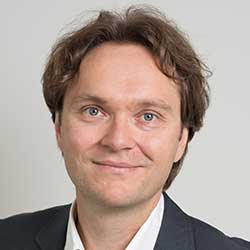 Thomas Hanser, DMD, MSc, MSc, MOM This webinar will describe the indication, scientific background and the clinical implementation of the so-called Split Bone Block Technique (Khoury Technique). This alveolar augmentation technique is based on the use of autogenous bone transplants, which are harvested intraorally using a safe and minimally invasive protocol. A specific preparation of the autogenous bone grafts is demonstrated to increase their biological potential and accelerate their healing. In addition to stabilizing the bone grafts, their hermetic soft tissue closure using innovative flap designs is also shown. In addition to shortening patient treatment time, the grafting technique demonstrated enables predictable and long-term stable volumetric and biological tissue stability in the context of lateral and vertical alveolar ridge augmentation. The philosophy of the Split Bone Block Technique is documented in the webinar through numerous different clinical cases and surgical videos. Upon completion of this presentation, participants should be able to: 1) Select appropriate anatomical structures and instruments for safe and minimally invasive intraoral bone graft harvesting. 2) Describe the specific preparation of autogenous bone grafts to increase their biological potential, accelerate their healing and shorten patient treatment time. 3) Identify the clinical and biological factors for predictable, reproducible, volumetric and biological long-term tissue stability with autogenous bone grafts in lateral and vertical alveolar ridge augmentation. Recorded on April 9th, 2025
Thomas Hanser, DMD, MSc, MSc, MOM This webinar will describe the indication, scientific background and the clinical implementation of the so-called Split Bone Block Technique (Khoury Technique). This alveolar augmentation technique is based on the use of autogenous bone transplants, which are harvested intraorally using a safe and minimally invasive protocol. A specific preparation of the autogenous bone grafts is demonstrated to increase their biological potential and accelerate their healing. In addition to stabilizing the bone grafts, their hermetic soft tissue closure using innovative flap designs is also shown. In addition to shortening patient treatment time, the grafting technique demonstrated enables predictable and long-term stable volumetric and biological tissue stability in the context of lateral and vertical alveolar ridge augmentation. The philosophy of the Split Bone Block Technique is documented in the webinar through numerous different clinical cases and surgical videos. Upon completion of this presentation, participants should be able to: 1) Select appropriate anatomical structures and instruments for safe and minimally invasive intraoral bone graft harvesting. 2) Describe the specific preparation of autogenous bone grafts to increase their biological potential, accelerate their healing and shorten patient treatment time. 3) Identify the clinical and biological factors for predictable, reproducible, volumetric and biological long-term tissue stability with autogenous bone grafts in lateral and vertical alveolar ridge augmentation. Recorded on April 9th, 2025 -
 Luca Fiorillo, DDS, PhD, MSc Nowadays, dental implantology represents the gold standard in oral rehabilitation, simple or complex. The high predictability over time, and the related techniques to allow the possible rehabilitations are increasingly simple and feasible for the clinician. All this is guaranteed thanks to the presence of new biomaterials, starting from the implant surfaces and their primary or secondary geometries, to arrive at all the biomaterials related to the regeneration and maintenance of peri-implant tissues. The new challenge for the clinician concerns the possibility of keeping these tissues healthy and limiting implant complications, including peri-implantitis. Recorded - August 10, 2021
Luca Fiorillo, DDS, PhD, MSc Nowadays, dental implantology represents the gold standard in oral rehabilitation, simple or complex. The high predictability over time, and the related techniques to allow the possible rehabilitations are increasingly simple and feasible for the clinician. All this is guaranteed thanks to the presence of new biomaterials, starting from the implant surfaces and their primary or secondary geometries, to arrive at all the biomaterials related to the regeneration and maintenance of peri-implant tissues. The new challenge for the clinician concerns the possibility of keeping these tissues healthy and limiting implant complications, including peri-implantitis. Recorded - August 10, 2021 -
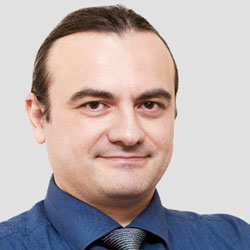 Kaan Orhan, DDS, MSc, MHM, PhD Dental implants have become part of routine treatment plans in many dental offices because of their popularity and acceptance by patients. Appropriate pre-placement planning, in which imaging plays a pivotal role, helps to ensure a satisfactory outcome. The development of precise pre-surgical imaging techniques and surgical templates allows the dentist to place these implants with relative ease and predictability. This presentation gives an overview of current practices in implant imaging for the practicing, with emphasis on selection criteria for imaging. Contemporary imaging techniques such as USG, MRI for dental implant planning, surgical phase, and also follow-up treatment will be discussed. Recorded - June 1, 2021
Kaan Orhan, DDS, MSc, MHM, PhD Dental implants have become part of routine treatment plans in many dental offices because of their popularity and acceptance by patients. Appropriate pre-placement planning, in which imaging plays a pivotal role, helps to ensure a satisfactory outcome. The development of precise pre-surgical imaging techniques and surgical templates allows the dentist to place these implants with relative ease and predictability. This presentation gives an overview of current practices in implant imaging for the practicing, with emphasis on selection criteria for imaging. Contemporary imaging techniques such as USG, MRI for dental implant planning, surgical phase, and also follow-up treatment will be discussed. Recorded - June 1, 2021 -
 Serdar Yalçın, DDS, PhD This webinar will discuss the concept of digital implantology to perform successful and proper implant treatments in the aesthetic region. The use of basic concepts of implantology, especially from the planning outcome to the prosthetic outcome, will be reviewed. Upon completion of this presentation, participants should be able to: 1) Recommend optimal implant placement at the anterior region. 2) Create a Digital Implantology Workflow for immediate implantation and missing lateral incisors. 3) Describe the advantages and disadvantages of guided surgery. Recorded – June 12, 2024
Serdar Yalçın, DDS, PhD This webinar will discuss the concept of digital implantology to perform successful and proper implant treatments in the aesthetic region. The use of basic concepts of implantology, especially from the planning outcome to the prosthetic outcome, will be reviewed. Upon completion of this presentation, participants should be able to: 1) Recommend optimal implant placement at the anterior region. 2) Create a Digital Implantology Workflow for immediate implantation and missing lateral incisors. 3) Describe the advantages and disadvantages of guided surgery. Recorded – June 12, 2024 -
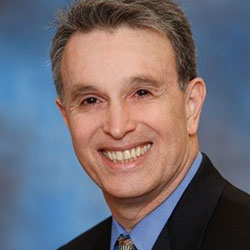 Robert Lemke, DDS, MD This is an update after one-year of being in the trenches of COVID-19. What do we know now. Why we will need masks for another year and which ones to avoid. I will review immunology as it applies to COVID-19. Vaccines from history, phase studies, mechanisms, herd protection and mutations will all be reviewed. Finally an intro to being a vaccine injection center will be introduced. Recorded - March 4, 2021
Robert Lemke, DDS, MD This is an update after one-year of being in the trenches of COVID-19. What do we know now. Why we will need masks for another year and which ones to avoid. I will review immunology as it applies to COVID-19. Vaccines from history, phase studies, mechanisms, herd protection and mutations will all be reviewed. Finally an intro to being a vaccine injection center will be introduced. Recorded - March 4, 2021 -
 Joseph Fiorellini, DMD, DMSc The clinician has multiple decisions when treatment planning for a compromised dentition. The evaluation of teeth for retention or extraction can involve factors including bone volume, extent of periodontal bone loss and restorability. The balance of these factors will enhance the predictably of the implants in the compromised dentition. Recorded - January 22, 2022
Joseph Fiorellini, DMD, DMSc The clinician has multiple decisions when treatment planning for a compromised dentition. The evaluation of teeth for retention or extraction can involve factors including bone volume, extent of periodontal bone loss and restorability. The balance of these factors will enhance the predictably of the implants in the compromised dentition. Recorded - January 22, 2022 -
 Gustavo Mendonca, DDS, MS, PhD It is critical to position and prepare ourselves with digital workflow in mind to be prepared and up to date with current technology. Digital technology is becoming more affordable in everyday dentistry. Combination of computed tomography and 3D scanning allows more advanced and predictable planning for treatment for implant cases. These advanced tools have great applications in clinical practice. This presentation will discuss steps of digital workflow for implant treatment planning and interim and final restorations utilizing intraoral scanners, CAD/CAM software and Recorded - May 17, 2022
Gustavo Mendonca, DDS, MS, PhD It is critical to position and prepare ourselves with digital workflow in mind to be prepared and up to date with current technology. Digital technology is becoming more affordable in everyday dentistry. Combination of computed tomography and 3D scanning allows more advanced and predictable planning for treatment for implant cases. These advanced tools have great applications in clinical practice. This presentation will discuss steps of digital workflow for implant treatment planning and interim and final restorations utilizing intraoral scanners, CAD/CAM software and Recorded - May 17, 2022 -
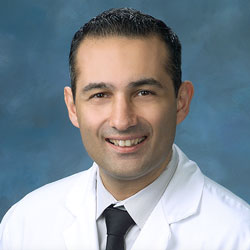 T. Cem Sayin, DDS, PhD Clinicians are confronted with difficult decisions regarding whether a tooth with pulpal and/or periapical disease should be saved through endodontic treatment or be extracted and replaced with an implant. This lecture will review the endodontic and implant literature as well as the related factors that need to be considered by the clinician affecting decision making for their patients. Recorded - February 03, 2021
T. Cem Sayin, DDS, PhD Clinicians are confronted with difficult decisions regarding whether a tooth with pulpal and/or periapical disease should be saved through endodontic treatment or be extracted and replaced with an implant. This lecture will review the endodontic and implant literature as well as the related factors that need to be considered by the clinician affecting decision making for their patients. Recorded - February 03, 2021 -
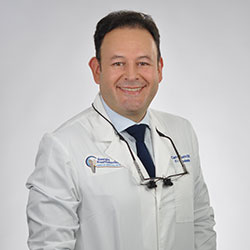 Carlos Castro, DDS This session will take a comprehensive look at the rationale for development and innovations in implant-supported denture planning and designs. Upon completion of this presentation, participants should be able to: 1) Discuss the evolution of implant-supported denture design and Its Impact on patient outcomes. 2) Explain biological considerations including osseointegration, tissue response, and long-term health. 3) Describe biomechanical perspectives: load distribution, prosthesis stability, and patient comfort Recorded – October 17, 2024
Carlos Castro, DDS This session will take a comprehensive look at the rationale for development and innovations in implant-supported denture planning and designs. Upon completion of this presentation, participants should be able to: 1) Discuss the evolution of implant-supported denture design and Its Impact on patient outcomes. 2) Explain biological considerations including osseointegration, tissue response, and long-term health. 3) Describe biomechanical perspectives: load distribution, prosthesis stability, and patient comfort Recorded – October 17, 2024 -
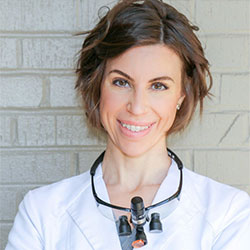 Courtney Donkoh, DDS This presentation will familiarize the audience with several types of facial growth patterns, as described in the literature by Dr. Arne Bjork. The audience will learn how to assess mandibular rotation and understand how to differentiate the various types of mandibular rotation, as described in the literature by Dr. Peter Buschang. Along the way, we will discuss interventions that influence mandibular rotation. Upon completion of this presentation, participants should be able to: 1) Describe the three types of forward mandibular rotation and two types of backward mandibular rotation. 2) Explain the difference between matrix rotation and true rotation of the mandible and describe how to assess both. 3) Identify six interventions that influence mandibular rotation. Recorded – March 19, 2024
Courtney Donkoh, DDS This presentation will familiarize the audience with several types of facial growth patterns, as described in the literature by Dr. Arne Bjork. The audience will learn how to assess mandibular rotation and understand how to differentiate the various types of mandibular rotation, as described in the literature by Dr. Peter Buschang. Along the way, we will discuss interventions that influence mandibular rotation. Upon completion of this presentation, participants should be able to: 1) Describe the three types of forward mandibular rotation and two types of backward mandibular rotation. 2) Explain the difference between matrix rotation and true rotation of the mandible and describe how to assess both. 3) Identify six interventions that influence mandibular rotation. Recorded – March 19, 2024 -
 Tara Aghaloo, DDS, MD, PhD Dental implants are a known and predictable treatment option for missing teeth, where most patients today desire this therapy. Although implant survival is extremely high, these favorable outcomes depend greatly on proper case selection, minimizing medical risk factors, careful surgical and prosthetic execution, and prevention and management of complications. In clinical practice, patient demands are becoming more difficult to meet, where they often seek immediate implants with immediate function. This leaves the practicing clinician with a dilemma of meeting patient expectations, but often without scientific evidence for our treatment protocols. This presentation will update the practicing dentist on achieving the most ideal and successful implant outcomes, improving case presentations, obtaining increased case selection, and avoiding and managing complications. Recorded - June 5, 2021
Tara Aghaloo, DDS, MD, PhD Dental implants are a known and predictable treatment option for missing teeth, where most patients today desire this therapy. Although implant survival is extremely high, these favorable outcomes depend greatly on proper case selection, minimizing medical risk factors, careful surgical and prosthetic execution, and prevention and management of complications. In clinical practice, patient demands are becoming more difficult to meet, where they often seek immediate implants with immediate function. This leaves the practicing clinician with a dilemma of meeting patient expectations, but often without scientific evidence for our treatment protocols. This presentation will update the practicing dentist on achieving the most ideal and successful implant outcomes, improving case presentations, obtaining increased case selection, and avoiding and managing complications. Recorded - June 5, 2021 -
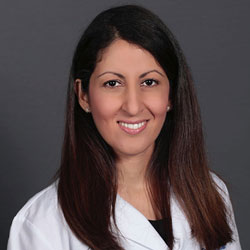 Ghadeer Thalji, DDS, PhD Success of dental implants requires the clinicians to understand the many factors that must come together to achieve long term outcomes. The lecture will explore the current scientific evidence on decisions related to the number of dental implants in various clinical scenarios of the partially and fully edentulous patients. Recorded - September 21, 2021
Ghadeer Thalji, DDS, PhD Success of dental implants requires the clinicians to understand the many factors that must come together to achieve long term outcomes. The lecture will explore the current scientific evidence on decisions related to the number of dental implants in various clinical scenarios of the partially and fully edentulous patients. Recorded - September 21, 2021 -
 Pablo Galindo-Moreno, DDS, PhD This presentation will be focused on those surgical factors that are easier and more predictable maxillary sinus floor techniques.How these factors influence the consolidation of the graft used, prevent accidents and complications of these techniques and increase the long-term survival of implants placed in this location will be addressed. The choice of biomaterial suitable for these techniques will be discussed. Recorded - December 1, 2022
Pablo Galindo-Moreno, DDS, PhD This presentation will be focused on those surgical factors that are easier and more predictable maxillary sinus floor techniques.How these factors influence the consolidation of the graft used, prevent accidents and complications of these techniques and increase the long-term survival of implants placed in this location will be addressed. The choice of biomaterial suitable for these techniques will be discussed. Recorded - December 1, 2022 -
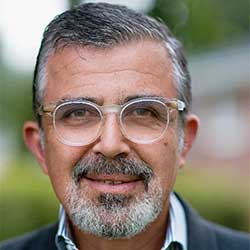 Irene Marron-Tarrazzi, DMD, MS The successful fabrication and delivery of fixed implant supported prosthesis is dependent upon a systematic interplay between the surgical and prosthetic treatment planning objectives. A paradigm shift has taken place as the Graftless surgical approach has gained credibility. Reduced treatment time, a single stage surgical reconstructions and immediate loading has resulted in a higher degree of case acceptance. Upon completion of this presentation, participants should be able to: 1) Identify the appropriate number of implants for full arch reconstructions. 2) Discuss the proper distribution of implants for full arch reconstructions. 3) Explain the use of Axial, tilted and zygoma implants for full arch maxillary reconstructions. Recorded - February 10, 2024
Irene Marron-Tarrazzi, DMD, MS The successful fabrication and delivery of fixed implant supported prosthesis is dependent upon a systematic interplay between the surgical and prosthetic treatment planning objectives. A paradigm shift has taken place as the Graftless surgical approach has gained credibility. Reduced treatment time, a single stage surgical reconstructions and immediate loading has resulted in a higher degree of case acceptance. Upon completion of this presentation, participants should be able to: 1) Identify the appropriate number of implants for full arch reconstructions. 2) Discuss the proper distribution of implants for full arch reconstructions. 3) Explain the use of Axial, tilted and zygoma implants for full arch maxillary reconstructions. Recorded - February 10, 2024 -
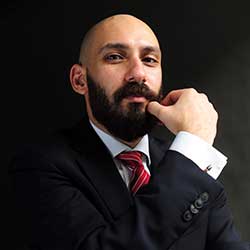 Torki, BDS, MSc In the past decade, efforts have been made to find the best treatment for immediate implant placement and with extraction sockets. Many protocols have been proposed such as ridge preservation, custom healing abutments and immediate loading. These protocols involve multiple steps and a waste of material. In this presentation, we will talk about methods to overcome these problems and minimize treatment time with digital solutions based on biology. Upon completion of this presentation, participants should be able to: 1) Describe the role of biological principles in abutment selection. 2) Explain the implant-abutment junction and its role in marginal bone stability. 3) Evaluate different methods for immediate temporization. Recorded – May 2, 2024
Torki, BDS, MSc In the past decade, efforts have been made to find the best treatment for immediate implant placement and with extraction sockets. Many protocols have been proposed such as ridge preservation, custom healing abutments and immediate loading. These protocols involve multiple steps and a waste of material. In this presentation, we will talk about methods to overcome these problems and minimize treatment time with digital solutions based on biology. Upon completion of this presentation, participants should be able to: 1) Describe the role of biological principles in abutment selection. 2) Explain the implant-abutment junction and its role in marginal bone stability. 3) Evaluate different methods for immediate temporization. Recorded – May 2, 2024 -
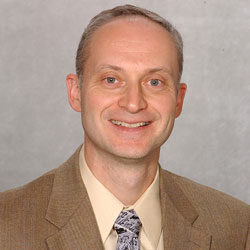 Len Tolstunov, DDS, DMD This presentation will discuss implant success and failure from the holistic approach and biologic balance that always exists between local and systemic factors. Loss of this balance and deterioration of key local factors and systemic condition will inevitably lead to a peri-implant bone loss and peri-implantitis. Surgical and some prosthetic considerations in implant failures will be discussed and clinical indices of implant success will be reviewed. Case presentations will help to review apical and marginal peri-implantitis. Inflammatory nature of peri-implantitis will be compared with non-inflammatory condition that can be classified as “peri-implantosis”. Treatment of peri-implantitis will be presented. Implant success will be defined as a dynamic process related to host’s health, as well as local factors, including bone and soft tissue quality around implant, implant design, and maintenance protocols. Finally, biologic principles of implant success at the time of implant placement and with age will be suggested. Recorded - January 19, 2022
Len Tolstunov, DDS, DMD This presentation will discuss implant success and failure from the holistic approach and biologic balance that always exists between local and systemic factors. Loss of this balance and deterioration of key local factors and systemic condition will inevitably lead to a peri-implant bone loss and peri-implantitis. Surgical and some prosthetic considerations in implant failures will be discussed and clinical indices of implant success will be reviewed. Case presentations will help to review apical and marginal peri-implantitis. Inflammatory nature of peri-implantitis will be compared with non-inflammatory condition that can be classified as “peri-implantosis”. Treatment of peri-implantitis will be presented. Implant success will be defined as a dynamic process related to host’s health, as well as local factors, including bone and soft tissue quality around implant, implant design, and maintenance protocols. Finally, biologic principles of implant success at the time of implant placement and with age will be suggested. Recorded - January 19, 2022 -
 Frauke Müller, DMD When tooth loss occurs later in life, ageing and multimorbidity impact dental treatment decisions. There is sufficient evidence to state that the mandibular implant overdenture is a well-established treatment modality, certainly in non-dependent edentulous individuals, but little is known on the very old and geriatric edentulous patients with comorbidities. They often present unfavourable anatomical conditions and effects of the multiple medications for their chronic conditions. The present webinar therefore describes the use of minimal-invasive and simple treatment concepts for elderly, edentulous patients and discusses the risks of implant placement that are related to their medical conditions. It further highlights possible complications which may arise with the onset of dependency and/or frailty and advises further simplification of the implant-restorations when needed. Recall and maintenance in this group of patients is crucial to assure the patients’ benefit from the intervention until late in life. Recorded - February 2, 2022
Frauke Müller, DMD When tooth loss occurs later in life, ageing and multimorbidity impact dental treatment decisions. There is sufficient evidence to state that the mandibular implant overdenture is a well-established treatment modality, certainly in non-dependent edentulous individuals, but little is known on the very old and geriatric edentulous patients with comorbidities. They often present unfavourable anatomical conditions and effects of the multiple medications for their chronic conditions. The present webinar therefore describes the use of minimal-invasive and simple treatment concepts for elderly, edentulous patients and discusses the risks of implant placement that are related to their medical conditions. It further highlights possible complications which may arise with the onset of dependency and/or frailty and advises further simplification of the implant-restorations when needed. Recall and maintenance in this group of patients is crucial to assure the patients’ benefit from the intervention until late in life. Recorded - February 2, 2022 -
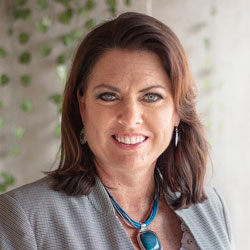 Kristie Kapp, RDH This webinar will discuss how to build a productive, profitable business without sacrificing patient and practice relationships. Dental practices which develop a culture shaped by a basic KPI's and team trust, naturally culminate in exceptional patient care, a bonded team, and a more joyous work experience. Recorded - May 3, 2022
Kristie Kapp, RDH This webinar will discuss how to build a productive, profitable business without sacrificing patient and practice relationships. Dental practices which develop a culture shaped by a basic KPI's and team trust, naturally culminate in exceptional patient care, a bonded team, and a more joyous work experience. Recorded - May 3, 2022 -
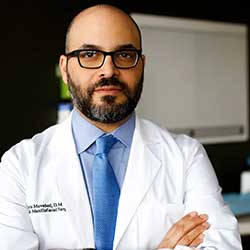 Reza Movahed, DMD Indications for application of total temporomandibular joint replacement (TJR) and maxillomandibular advancement (MMA) are multifaceted and vary from case to case, and it is imperative for the clinician to understand all the contemporary approaches and literature when considering the appropriate treatment for airway disorders, obstructive sleep apnea (OSA) , TMD, craniofacial deformities and trauma. The proper diagnosis must be supported by the necessary studies, including TMJ MRI, CBCT, polysomnography, and clinical findings. The correct option and timing of surgery is paramount to the long-term success of each case. Tailored treatment planning will be discussed in conjunction with cutting edge digital workflow to increase success and predictability of surgical and stable orthodontic outcomes. Upon completion of this presentation, participants should be able to: 1) Explain the various TMJ pathologies requiring TJR. 2) Describe when to use TJR to ensure the most stable biomechanical outcomes. 3) Recognize the available methodologies including clinical assessment, CT scan, and MRI for utilizing TJR as part of the ortho-surgical treatment. Recorded on May 1st, 2025
Reza Movahed, DMD Indications for application of total temporomandibular joint replacement (TJR) and maxillomandibular advancement (MMA) are multifaceted and vary from case to case, and it is imperative for the clinician to understand all the contemporary approaches and literature when considering the appropriate treatment for airway disorders, obstructive sleep apnea (OSA) , TMD, craniofacial deformities and trauma. The proper diagnosis must be supported by the necessary studies, including TMJ MRI, CBCT, polysomnography, and clinical findings. The correct option and timing of surgery is paramount to the long-term success of each case. Tailored treatment planning will be discussed in conjunction with cutting edge digital workflow to increase success and predictability of surgical and stable orthodontic outcomes. Upon completion of this presentation, participants should be able to: 1) Explain the various TMJ pathologies requiring TJR. 2) Describe when to use TJR to ensure the most stable biomechanical outcomes. 3) Recognize the available methodologies including clinical assessment, CT scan, and MRI for utilizing TJR as part of the ortho-surgical treatment. Recorded on May 1st, 2025 -
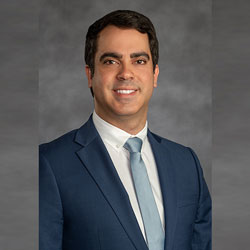 Rafael Siqueira, DDS, MS, PhD Immediate implant placement is a surgical approach that gained tremendously in popularity and patient acceptance throughout the years. One of the most desirable features of this technique is the potential in optimizing esthetic success by preserving the existing osseous and gingival architecture, with a reduced overall treatment time, invasiveness, and cost. However, unsuccessful treatments can occur if crucial biological principles are not respected. A thorough discussion concerning the bone remodeling process that occurs after tooth extraction and the 3D implant positioning in immediate implants is required. Together, these two factors will dictate the outcome of the peri implant tissue dimensions and architecture by their direct influence and interactions with other essential elements such as periodontal phenotype, loading protocol, abutment/prosthesis design, hard and soft-tissue augmentation. Recorded - April 20, 2022
Rafael Siqueira, DDS, MS, PhD Immediate implant placement is a surgical approach that gained tremendously in popularity and patient acceptance throughout the years. One of the most desirable features of this technique is the potential in optimizing esthetic success by preserving the existing osseous and gingival architecture, with a reduced overall treatment time, invasiveness, and cost. However, unsuccessful treatments can occur if crucial biological principles are not respected. A thorough discussion concerning the bone remodeling process that occurs after tooth extraction and the 3D implant positioning in immediate implants is required. Together, these two factors will dictate the outcome of the peri implant tissue dimensions and architecture by their direct influence and interactions with other essential elements such as periodontal phenotype, loading protocol, abutment/prosthesis design, hard and soft-tissue augmentation. Recorded - April 20, 2022 -
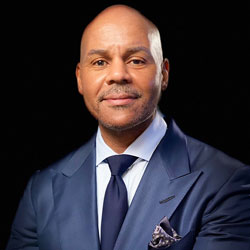 Richard Martin, DDS Collapse of the buccopalatal dimension of an extraction socket in implant dentistry is a known sequela. Multiple ridge preservation techniques to include bone and soft tissue grafting have been utilized over the years, Although these techniques can be successful, loss of buccal contour is a common finding even after 1 year in function. Ultimately this can lead the hygiene compromise and periimplantitis. Partial extraction therapy (PET) (socket shield, pontic shield and root submergence), specifically the socket shield is a technique aimed at addressing this collapse. The success of the procedure is due to intentional retention of small fragment of buccal root attached the bone. This root attachment has been shown to maintain the periodontal ligament (PDL)j and blood supply and as result the thin bundle bone. Utilization if the PET in full arch implant reconstruction has shown to be effective. Recorded - October 18, 2022
Richard Martin, DDS Collapse of the buccopalatal dimension of an extraction socket in implant dentistry is a known sequela. Multiple ridge preservation techniques to include bone and soft tissue grafting have been utilized over the years, Although these techniques can be successful, loss of buccal contour is a common finding even after 1 year in function. Ultimately this can lead the hygiene compromise and periimplantitis. Partial extraction therapy (PET) (socket shield, pontic shield and root submergence), specifically the socket shield is a technique aimed at addressing this collapse. The success of the procedure is due to intentional retention of small fragment of buccal root attached the bone. This root attachment has been shown to maintain the periodontal ligament (PDL)j and blood supply and as result the thin bundle bone. Utilization if the PET in full arch implant reconstruction has shown to be effective. Recorded - October 18, 2022 -
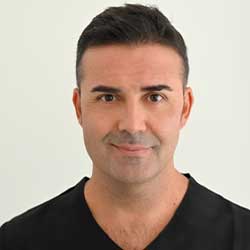 Recorded on May 13th, 2025 Description: This lecture explores the current state of occlusal management within prosthodontics, highlighting advancements in digital workflows, including the integration of intraoral scanning, computer-aided design and manufacturing (CAD/CAM), jaw tracking motion devices and virtual articulation systems. We will discuss how and when these tools enhance or do not enhance the accuracy of diagnosing occlusal relationships and the fabrication of prosthetic devices, ultimately leading to improved functional and aesthetic outcomes for patients. Furthermore, the role of digital occlusal analysis software in assessing and fine-tuning occlusal contacts for optimal performance and comfort will be addressed. This session is relevant for all clinicians who wish to enhance their knowledge in occlusion management in an increasingly digital world. Upon completion of this presentation, participants should be able to: 1) Identify the essential steps to digitalize the clinical data collection of the patient during the diagnostic phase. 2) Explain the digital procedures for aligning files that contain clinical data and the clinical procedures for executing complex prosthetic rehabilitation cases. 3) Discuss the advantages and disadvantages of the reported procedures. Luca Lepidi, DDS, MS Dr. Lepidi graduated from the University of Rome La Sapienza in 2001 (cum laude) and completed Master of Science in Oral Surgery in University of Rome, Tor Vergata. He attended the post-graduate program in Oral Implantology at the University of Chieti and in Gnatology at the University of Milano, Italy. Since then, he has worked intensively in the field of implant prosthodontics and digital dentistry. He also served as a part-time faculty member in prosthodontics, Department of Clinical and Experimental Medicine, University of Foggia Dental School, in Italy since 2011. Dr. Lepidi is Adjunct Professor at the University of Ferrara since 2022 and involved in multiple research projects in the areas of prosthodontics therapy and digital dentistry and is a senior lecturer at several University in Italy and in USA in post-graduate programs. He is an author and co-author of peer reviewed publications and serves as reviewer for multiple journals with high impact factor covering Prosthodontics and Digital Dentistry. Dr. Lepidi has indicated he has no relevant financial relationships to disclose. Relevant literature for further information: The 4D virtual patient: A proof of concept in digital dentistry Lepidi, Luca et al. The Journal of Prosthetic Dentistry, Published online April 13, 2024 Lepidi L, Suriano C, Wang HL, Granata S, Joda T, Li J. Digital fixed complete-arch rehabilitation: From virtual articulator mounting to clinical delivery. J Prosthet Dent. 2022 Mar;127(3):398-403. doi: 10.1016/j.prosdent.2020.08.049. Epub 2020 Dec 13. PMID: 33317830.
Recorded on May 13th, 2025 Description: This lecture explores the current state of occlusal management within prosthodontics, highlighting advancements in digital workflows, including the integration of intraoral scanning, computer-aided design and manufacturing (CAD/CAM), jaw tracking motion devices and virtual articulation systems. We will discuss how and when these tools enhance or do not enhance the accuracy of diagnosing occlusal relationships and the fabrication of prosthetic devices, ultimately leading to improved functional and aesthetic outcomes for patients. Furthermore, the role of digital occlusal analysis software in assessing and fine-tuning occlusal contacts for optimal performance and comfort will be addressed. This session is relevant for all clinicians who wish to enhance their knowledge in occlusion management in an increasingly digital world. Upon completion of this presentation, participants should be able to: 1) Identify the essential steps to digitalize the clinical data collection of the patient during the diagnostic phase. 2) Explain the digital procedures for aligning files that contain clinical data and the clinical procedures for executing complex prosthetic rehabilitation cases. 3) Discuss the advantages and disadvantages of the reported procedures. Luca Lepidi, DDS, MS Dr. Lepidi graduated from the University of Rome La Sapienza in 2001 (cum laude) and completed Master of Science in Oral Surgery in University of Rome, Tor Vergata. He attended the post-graduate program in Oral Implantology at the University of Chieti and in Gnatology at the University of Milano, Italy. Since then, he has worked intensively in the field of implant prosthodontics and digital dentistry. He also served as a part-time faculty member in prosthodontics, Department of Clinical and Experimental Medicine, University of Foggia Dental School, in Italy since 2011. Dr. Lepidi is Adjunct Professor at the University of Ferrara since 2022 and involved in multiple research projects in the areas of prosthodontics therapy and digital dentistry and is a senior lecturer at several University in Italy and in USA in post-graduate programs. He is an author and co-author of peer reviewed publications and serves as reviewer for multiple journals with high impact factor covering Prosthodontics and Digital Dentistry. Dr. Lepidi has indicated he has no relevant financial relationships to disclose. Relevant literature for further information: The 4D virtual patient: A proof of concept in digital dentistry Lepidi, Luca et al. The Journal of Prosthetic Dentistry, Published online April 13, 2024 Lepidi L, Suriano C, Wang HL, Granata S, Joda T, Li J. Digital fixed complete-arch rehabilitation: From virtual articulator mounting to clinical delivery. J Prosthet Dent. 2022 Mar;127(3):398-403. doi: 10.1016/j.prosdent.2020.08.049. Epub 2020 Dec 13. PMID: 33317830.

